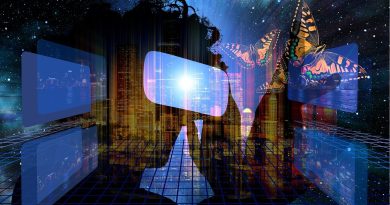Considerations for Creating the Metaverse Space
To transform the digital economy, improve interoperability for digital environments, create digital identities that consumers and organizations can fully own, establish new governance rules, and create more immersive and persistent digital experiences, the pace of innovation is accelerating.
Future metaverse developments are being eagerly anticipated! Individuals, businesses, brands, and communities must all work together to make this a reality. For a metaverse to thrive and provide benefits and opportunities to a diverse range of users, several critical factors must be considered.
Digital content is described using a variety of terms, including digital twins. Digitization of historical elements is also required if the metaverse is to capture our culture’s current and future production, as well as the dynamic nature of current and future civilizations. Content, products, and services can be delivered on-demand, anywhere, and at any time using affordable, sustainable hardware.
A Method for Portability and Interoperability
Avatars, 3D models, mixed reality, and spatial environments are asset classes rapidly evolving due to market innovation. Asset classes and metadata are combined to form content packages. The metaverse is made up of various platforms, which can be proprietary or platform-specific.
Despite the fact that these proprietary and platform-specific approaches have the potential to rapidly scale innovation, the metaverse will necessitate a high level of portability and interoperability.
Transparent documentation, unique identifiers traveling from one platform to another, directly transferring assets from one platform to another without further entanglement, and facilitating group sharing and sharing are all important aspects of portability.
Interoperability allows users to share data and assets across platforms and networks. Despite the existence of multiple standards, none of them caters to all new media types in a comprehensive manner today, let alone preparing for tomorrow’s assets and data types. Existing standards also do not account for massive amounts of unstructured data. For digitizing assets of all types, a minimally viable and straightforward process is not used.
There is no standard data model for the metaverse and its current setting. Still, suppose that others in a larger open ecosystem adopt an improved standard data model like Microsoft’s. In that case, it could be the first step toward a more comprehensive approach to metadata and data.
More committed collaborations among business, government, and nonprofit players, as seen previously with the Open Data Initiative, should be promoted quickly, resulting in open standards. The metaverse should be accessible to as many people as possible while also operating smoothly across platforms and partners.
Migration, Imitation, and Representation
Data and assets must be maintained as technology evolves, from original software and hardware environments to evolving ones. It will allow a thriving metaverse with the riches of the digitized present to exist in the future. Virtualization, mobility, and re-presentation will all contribute to a rich historical and modern production metaverse.
Emulating
An emulator attempts to replicate the presentation and experience of the original content within the context of its source while also undergoing background modifications.
Migration
Migrating places data and assets in new environments and contexts, often with significant changes in experience or conditions, yielding results that differ significantly from the source.
Representing
Assets and data evolve and are presented in newer formats, media, and platforms throughout the metaverse. When considering what happens in a computational environment and what tasks and interactions users engage in, it is critical to evaluate the performance of data and assets, as well as the metaverse itself.
In a Changing World, Copyright
Copyright could significantly impede the growth and reasonable use of the metaverse. In the United States, the basic rule for copyright protection for works created after January 1, 1978, is that it lasts for the author’s lifetime plus another seventy years. Indeed, for fourteen years, the US Congress’s 1790 copyright legislation protected works.
While specific intellectual property (IP) may have long-term value for its creators, the speed of production and copyright structure does not always function in the metaverse, given the vast amount of information created with freely available and adaptable digital tools. Many metaverse experts are customers who customize things to meet their needs. These customers are known as prosumers. In a digital culture, prosumers’ abilities and dispositions to remix and remake digital assets and data scale awareness, brand strength, and market expansion.
With lifespans ranging from minutes to less than two years, metaverse content necessitates significantly shorter copyright periods that progress at the speed of innovation generated by digital-first content production. Clear, unambiguous, and global rights to use and reuse material that encourages innovation while supporting artists and rewarding new content creation are critical, mainly as human and machine manufacturers build the metaverse.
International Commons on Metaverse
Furthermore, the metaverse may necessitate a current global commons based on a globally operating framework, such as Creative Commons legal instruments that are readable by both humans and machines. A collection of common resources from which everyone can benefit and contribute is essential in the metaverse’s connection to markets as a source of innovation. Individual creators, businesses, and communities will all be expected to support the metaverse’s commons through unified policy and financial commitment. It is common to have a gathering metaverse space for people to collaborate, operate, and share.
Simultaneously, the metaverse’s global commons should be a potential platform for respective presentation, essence, and expandable opportunities for self-actualization. To be effective, a viable metaverse’s international commons will require conversation, judgment, humanitarianism, and faith. The metaverse will be open to all. Because they allow commercial reuse, sharing, remixing, and new content creation, the Creative Commons Zero Public Domain Dedication and the Creative Commons Attribution license are the legal instruments best positioned to enable open Access in the global metaverse at this time.
Standards Must Be Met
The enterprise will require standards, whether it is the metaverse or the spatial web. IEEE and the Spatial Web Foundation have announced collaborations and support for comprehensive standards to ethically enable the “cyber-physical” web of the twenty-first century. The spatial web is the Internet’s next phase. It is a significant step forward that will allow the metaverse and Smart Cities to emerge. Digital twins and other forms of digitalization will be possible thanks to a hyper-connected, context-specific network of people, AI, and robots.
This collaboration produced a set of metaverse standards developed by engineers and privacy activists, technology practitioners, and cybersecurity experts. Hyperspatial Domains, Hyperspatial Transaction Protocol (HSTP), and HyperspatialModeling Language are the spatial web Foundation standards that govern context-aware collaborative computing that provides data provenance, lineage, and interoperability across linked devices (HSML).
The XR Safety Initiative (XRSI) has created a set of classic depictions for the XR domain, an inclusive word for immersive technologies such as VR and AR, and a new set of diversity, inclusiveness, values, and security standards in response. XRSI has recently released a structure for solitude and security in XR and is currently working on version 1.1, which will expand the range to include the metaverse. In addition, the organization is consulting with several US lawmakers and senators on security, privacy, and trust for vulnerable sectors like Immersive Healthcare, as well as collaborating with the British National Health Service and the Australian eSafety Commissioner.
Creating A Welcoming and Inclusive Environment
Assets, data, and platforms should be accessible in the metaverse to serve a wide range of users. Individuals with disabilities benefit from diversity in the design process as well. In terms of accessibility, the metaverse should not make the same mistakes as before. To make the metaverse accessible, basic infrastructure, applications, and policies must be in place. The ability to interact with the metaverse is required for its development. To benefit the metaverse, users with diverse perspectives and needs must be brought together and collaborated with. Individuals, organizations, and communities with deep expertise and lived experience will have an impact on an accessible and inclusive metaverse. For success, global cooperation and shared resources are essential.
Development That Is Long-Term
It should match excitement with action in order to maintain the metaverse’s financial and ecological stability. It is critical that the details used to build interactions in the metaverse be reusable or reintegrated into nature. To allow more people around the world to participate in the metaverse, devices will need to be reconfigured and repaired. Climate, public health, and safety concerns will have an impact on their region’s resources and manufacturing capacity.
We’ll need to learn both soft and hard technical skills to improve and update our networked suite of gadgets in the metaverse. Whereas, in order for many people to join the stream with their tools, hardware and software must last as long as possible.
From the start, the metaverse should be built with a genuine effort to deal with climate change, pollution, waste, and after-effects. Everyone involved in creating the physical world and the metaverse must exercise responsible stewardship.
Metaverse Modifications
People can take a walk into a technological era that is superior to what we have previously understood when we step into our Smart cities and the metaverse. The metaverse provides new economic opportunities, ecologies, and the chance to emphasize morality and confidentiality. It’s not going to be easy. Businesses and governments must reconsider their worldviews (mundanely and practically). While the goal is to build a vibrant metaverse that will last and be accessible to everyone by working together and being transparent, open, and accessible.
While the idea of connecting with others in a virtual online environment is not new, an entire metaverse with lifelike interactions is still years away. According to Bill Gates (Microsoft co-founder) in his annual year review blog post, many people lack the VR goggles and motion capture gloves needed to accurately record their body language, emotion, and voice quality. Nonetheless, Gates believes that many virtual meetings will transition from 2D square boxes to the metaverse — a 3D space where participants appear as digital avatars — within the next 2-3 years.




